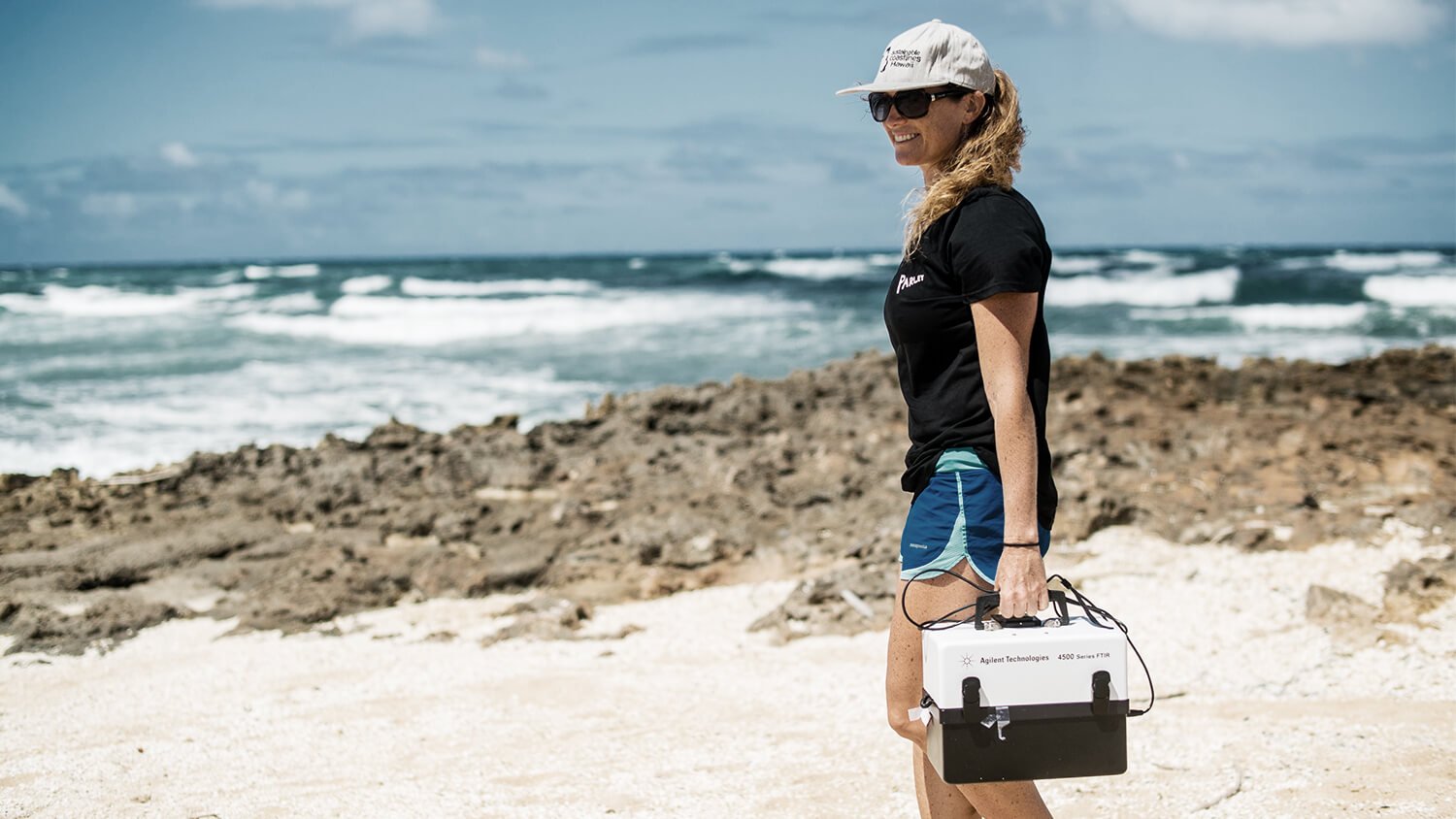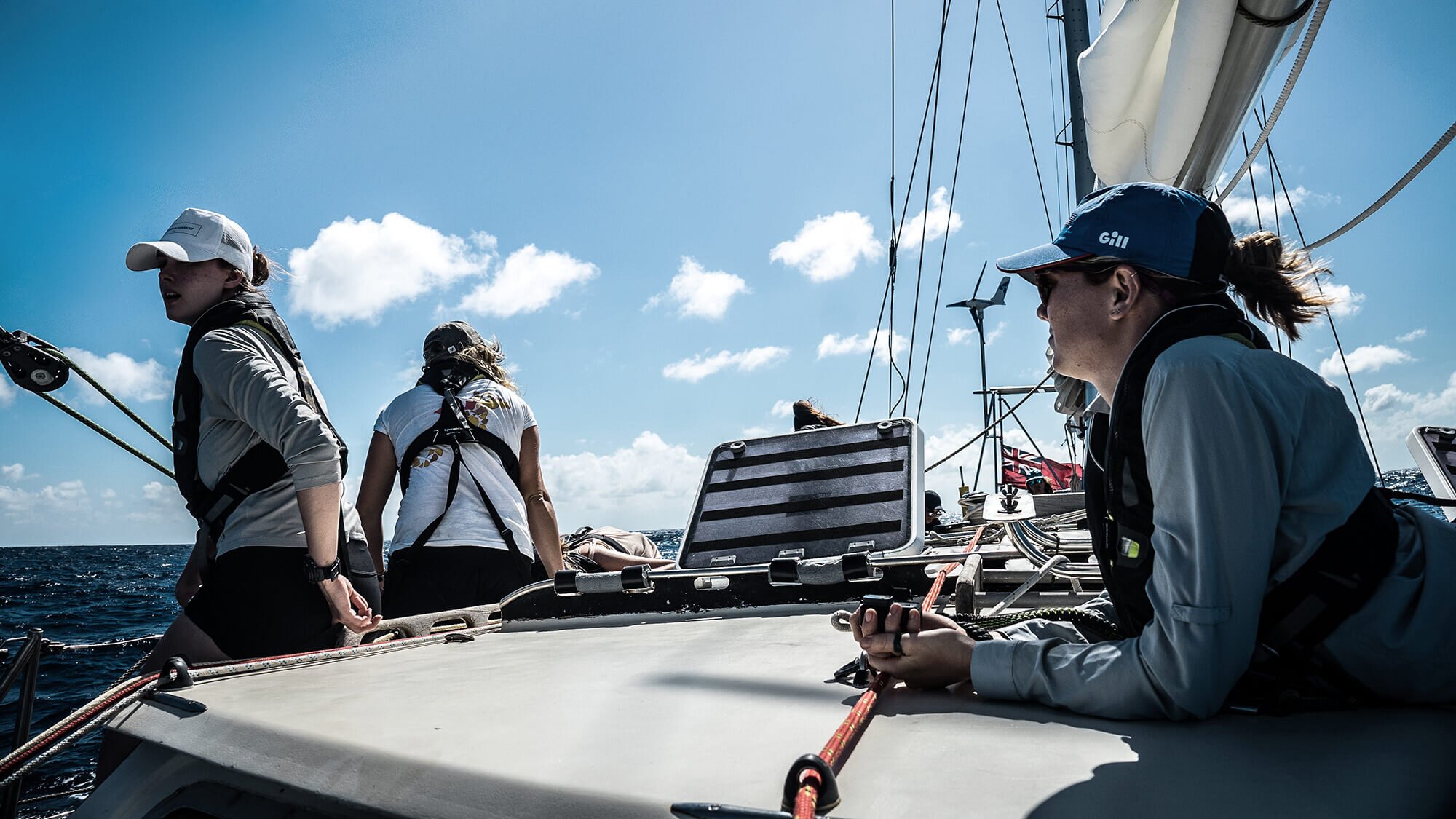Science vs Plastic: Detecting the threat
Dr. Sarah-Jeanne Royer is an oceanographer and Science Advisor for Parley. Her research focuses on the fate of marine debris and plastic degradation in the ocean, and how it contributes to the emission of greenhouse gases to the atmosphere. In this edition of Science vs Plastic, Sarah-Jeanne introduces us to FTIR – a powerful tool that helps researchers figure out exactly what type of plastic they’re dealing with.
When I'm on a remote beach collecting plastic samples for my own research or for Parley, I want to find out what types of plastic are the most common, and where the plastic is coming from. The first thing I do to help identify the type of debris is ask the following question: does the debris have a local origin or an oceanic origin?
When collecting plastic samples in Hawaii, I can tell that more than 95% of the plastic debris comes from outside of the islands, and hence that plastic has to float to end up here. If it’s floating it means that the density of the plastic is lower than seawater. For example, PET bottles will sink because their density is much higher than seawater, but their bottle caps are usually made from polypropylene, and polypropylene floats on the ocean’s surface. On Hawaiian beaches, you hardly ever see PET bottles without a cap, for this reason.
One of the biggest problems on remote islands is the accumulation of fishing gear along the coastlines – because it’s made to be durable, because it floats, and because it can be discarded anywhere in the ocean. It may account up to 50% of the plastic encountered. Unlike land-based plastic pollution, the origin of plastic marine debris is harder to identify because of its high level of degradation due to wave action and weathering from UV radiation. Hence, we need more powerful tools to identify it.
One of these is known as FTIR, which stands for Fourier-Transform InfraRed spectroscopy. This can help tell us what kind of plastic we're looking at. It works by using a laser beam to create a spectrum, then matching that with a library of different materials. That library is the key to the research, because as plastics degrade the spectrum becomes less distinct. We start by testing items that have never been exposed to sun and if possible that are virgin (no extra chemical compounds added such as additives, UV stabilizers, plasticizers and flame retardants) then finding those same items on remote beaches, and matching them up.
The unit I use is a portable system made by Agilent. I can take it to any beach or coastline, set it up and test plastic samples right there next to the ocean. This allows me to get a better understanding of the composition and break down of plastics found at each site and ultimately track down where it originated. FTIR is also used in the recycling industry and by Parley when creating Ocean Plastic® – since not every type of plastic in the upcycling process can be used. Hence, when the source is unknown, we can check to see what kind of plastic the material is made from and make sure it’s suitable to use.











